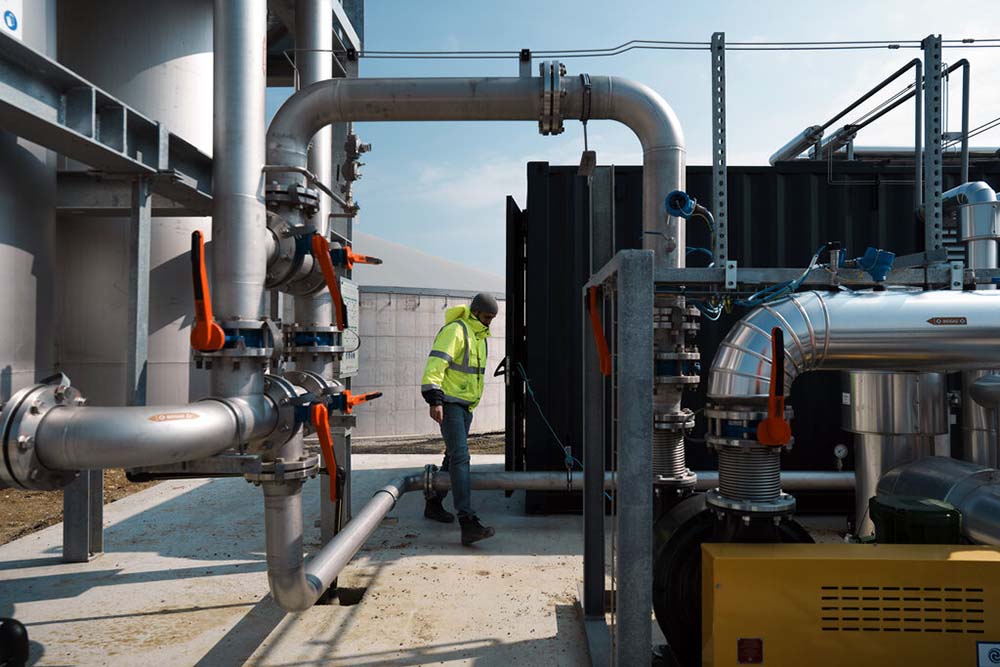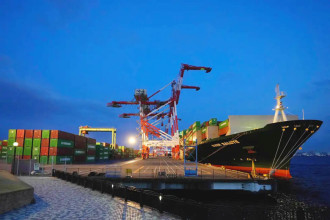
SONCHAMP, FRANCE: In lush fields southwest of Paris, farmers are joining Europe's fight to free itself from Russian gas.
They will soon turn on the tap of a new facility where crops and agricultural waste are mashed up and fermented to produce "biogas." It's among energy solutions being promoted on the continent that wants to choke off funding for Russia's war in Ukraine by no longer paying billions for Russian fossil fuels.
Small rural gas plants that provide energy for hundreds or thousands of nearby homes aren't — at least anytime soon — going to supplant the huge flows to Europe of Russian gas that powers economies, factories, businesses and homes. And critics of using crops to make gas argue that farmers should be concentrating on growing food — especially when prices are soaring amid the fallout of the war in Ukraine, one of the world's breadbaskets.
Still, biogas is part of the puzzle of how to reduce Europe's energy dependence.
The European Biogas Association says the European Union could quickly scale up the production of bio-methane, which is pumped into natural gas networks. An investment of 83 billion euros ($87.5 billion) — which, at current market prices, is less than the EU's 27 nations pay per year to Russia for piped natural gas — would produce a tenfold increase in bio-methane production by 2030 and could replace about a fifth of what the bloc imported from Russia last year, the group says.
The farmers around the Paris-region village of Sonchamp feel their new gas plant will do its bit to untie Europe from the Kremlin.
"It's not coherent to go and buy gas from those people who are waging war on our friends," said Christophe Robin, one of the plant's six investors, who farms wheat, rapeseed, sugar beets and chickens.
"If we want to consume green (energy) and to avoid the flows and contribution of Russian gas, we don't really have a choice. We have to find alternative solutions," he said.
Biogas is made by fermenting organic materials — generally crops and waste. Robin likened the process to food left too long in a container.
"When you open it, it goes 'Poof.' Only here, we don't open it. We collect the gas that comes from the fermentation," he said.
The gas from their plant could meet the needs of 2,000 homes. It will be purified into bio-methane and injected into a pipeline to the nearby town of Rambouillet, heating its hospital, swimming pool and homes.
"It's cool," said Robin. "The kids will benefit from local gas."
Like in the rest of Europe, the production of bio-methane in France is still small. But it is booming. Almost three bio-methane production sites are going online every week in France on average and their numbers have surged from just 44 at the end of 2017 to 365 last year. The volume of gas they produced for the national network almost doubled in 2021 compared to the previous year and was enough for 362,000 homes.
France's government has taken several steps to quicken bio-methane development since Russia invaded Ukraine on Feb. 24. The industry says bio-methane met almost 1% of France's needs in 2021 but that will increase to at least 2% this year and it could make up 20% of French gas consumption by 2030, which would be more gas than France imported last year from Russia.
The Sonchamp farmers took out 5 million euros ($5.3 million) in loans and received a 1-million-euro state subsidy to build their plant, Robin said. They signed a 15-year contract with utility firm Engie, with a fixed price for their gas. That will limit their ability to profit from high gas prices now but ensures them a stable income.
"We're not going to be billionaires," said Robin.
Workers are finishing the construction and the plant is almost ready to be connected to the network. Piles of agricultural waste — wheat husks, pulped sugar beets, onion peelings, even chicken droppings — have been prepared to be fed into the giant bubble-like fermentation tanks.
Winter barley specially grown to make gas will make up about 80% of the 30 tons of organic material that will be fed each day into the plant.
Robin insists that the barley won't interfere with the growing of other crops for food, which critics worry about. Instead of one food crop per year, they'll now have three harvests every two years — with the barley as extra, sandwiched in between, Robin said.
In Germany, the biggest biogas producer in Europe, the government is cutting down on crop cultivation for fuels. The share of corn permitted in biogas facilities will be lowered from 40% to 30% by 2026. Financial incentives will be provided so operators use waste products such as manure and straw instead.
Germany is estimated to have over 9,500 plants, many of them small-scale units supplying rural villages with heat and electricity.
Andrea Horbelt, a spokeswoman for the German biogas association, said the production of bio-methane could be doubled in a matter of years but also wouldn't be cheap.
"Using biogas for electricity is more expensive than solar and wind, and will always remain so," she said.
At the end of their gas-making process, the Sonchamp farmers will also get nitrogen- and potassium-rich wastes from the fermenters that they'll use to fertilize their fields, reducing their consumption of industrial fertilizer.
"It's a circular economy and it's green. That pleases me," Robin said. "It's a superb adventure."
By RSS/AP
READ ALSO:
Published Date: May 6, 2022, 12:00 am
Post Comment
E-Magazine
RELATED International





